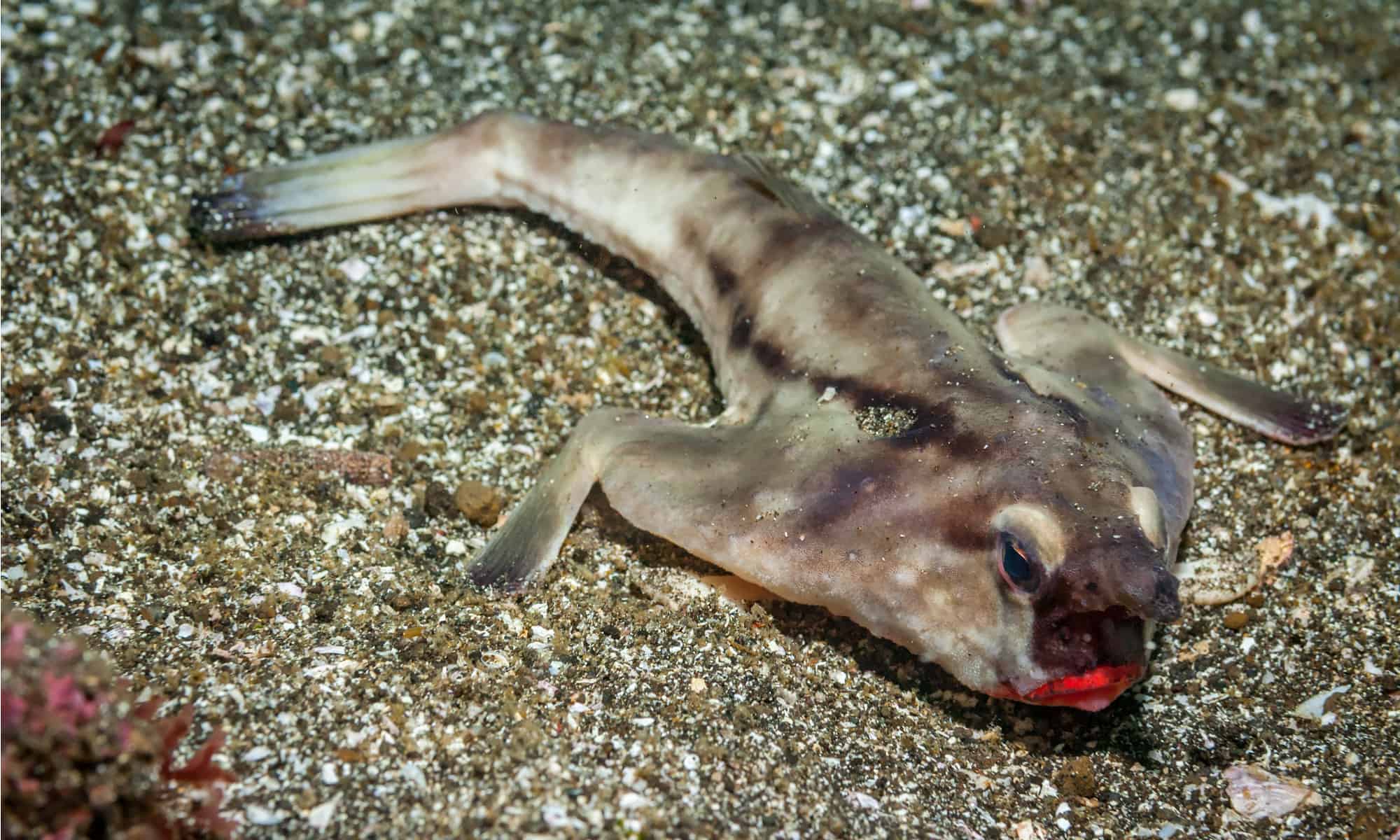
The Shortnose Batfish is a fascinating and unique creature found in the waters of the Caribbean. These small, peculiar-looking fish belong to the anglerfish family and boast a distinctive set of physical features that make them stand out from other marine species. From their short, upturned snouts to their flattened bodies and long, spiny fins, Shortnose Batfish are truly remarkable creatures.
In this article, we will dive into the world of the Shortnose Batfish and explore 20 intriguing facts about them. We will uncover their habitat, behavior, feeding habits, and much more. So grab your snorkeling gear and join us as we embark on an underwater adventure to discover the wonders of these fascinating fish.
Key Takeaways:
- The Shortnose Batfish is a fascinating and colorful species found in the tropical waters of the Indo-Pacific. Its unique appearance, social behavior, and hunting techniques make it a captivating subject for marine enthusiasts and divers.
- These batfish play a crucial role in coral reef ecosystems, controlling the population of small invertebrates and contributing to the overall balance and health of the reef. Conservation efforts are essential to ensure their long-term survival.
A Mysterious and Unique Species
The Shortnose Batfish (Platax teira) is a fascinating and distinctive species found in the tropical waters of the Indo-Pacific region. It belongs to the family Ephippidae, commonly known as the batfish family.
Unusual Physical Appearance
The Shortnose Batfish has a highly unusual and visually striking appearance. It features a flattened body with a round, disc-like shape and a short snout. Its pectoral fins resemble wings, which earned it the name “batfish.”
Vibrant Coloration
These fish display a wide range of vibrant colors, including shades of yellow, orange, brown, and black. Their eye-catching color patterns help them blend in with their coral reef surroundings.
Social Creatures
Shortnose Batfish are social creatures and can be found in small groups or schools. They use their pectoral fins to navigate gracefully through the water, creating a mesmerizing sight.
Diet and Feeding Habits
They are omnivorous and primarily feed on a diet consisting of small invertebrates, including crustaceans, mollusks, and small fish. They also feed on algae and other plant matter found on coral reefs.
Uncommon Hunting Technique
Shortnose Batfish have a unique hunting technique. They use their modified pectoral fins to walk along the bottom of the ocean floor in search of small prey hiding in the sand or under rocks.
Exquisite Camouflage Skills
These batfish have impressive camouflage abilities, allowing them to blend in perfectly with their surroundings. Their color patterns and body shape help them hide from predators and ambush unsuspecting prey.
Bizarre Mating Rituals
During the mating season, male Shortnose Batfish undergo significant changes in coloration, developing brighter and more vibrant hues. They engage in elaborate courtship displays to attract females and assert their dominance.
Cooperative Spawning
Shortnose Batfish engage in cooperative spawning, with several males fertilizing the eggs released by a single female. This ensures a higher chance of successful reproduction and survival for the species.
Unique Parental Care
After spawning, the female deposits the sticky eggs onto a nearby substrate. The male batfish takes on the responsibility of guarding and protecting the eggs until they hatch, ensuring the survival of the offspring.
Longevity
Shortnose Batfish have a relatively long lifespan, with individuals living up to 10 years in the wild, given the absence of predation or other threats.
Susceptible to Habitat Destruction
Shortnose Batfish populations are at risk due to the destruction of coral reefs, their primary habitat. Factors such as pollution, climate change, and overfishing pose a significant threat to their survival.
Tourist Attraction
The unique appearance and behavior of the Shortnose Batfish make them popular attractions for divers and snorkelers seeking to observe these intriguing creatures in their natural habitat.
Habitat Range
They are primarily found in the warm, tropical waters of the Indo-Pacific region, including the Red Sea, the Great Barrier Reef, and the coastlines of Southeast Asia.
Adaptability
Shortnose Batfish have shown remarkable adaptability to changing conditions. They can thrive in a range of reef environments, including coral-rich reefs, seagrass beds, and rocky areas.
Threat Displays
When threatened, Shortnose Batfish can perform dramatic threat displays by extending their dorsal spines and spreading their pectoral fins to appear larger and more intimidating to potential predators.
Commercial and Aquaculture Value
These batfish have gained commercial value in the aquarium trade due to their unique appearance. However, sustainable aquaculture techniques are recommended to prevent overharvesting from the wild population.
Nighttime Behavior
Shortnose Batfish are primarily active during the day, hunting and foraging for food. At night, they take refuge in small crevices or caves within the reef for protection.
Population Status
The Shortnose Batfish population appears to be stable at present, but continued monitoring and conservation efforts are crucial to ensure their long-term survival.
Importance in Ecosystem
Shortnose Batfish play a significant role in their ecosystem as key members of the coral reef community. They help control the population of small invertebrates and contribute to the overall balance and health of the reef.
Overall, the Shortnose Batfish is a captivating species with a range of unique characteristics. Their vibrant colors, unusual physical appearance, and fascinating behaviors make them an intriguing subject of study and a delightful sight for divers and marine enthusiasts alike.
Conclusion
Shortnose batfish may not be as well-known as some other marine creatures, but they are fascinating creatures with unique characteristics. From their unusual appearance to their ability to walk on the seabed, they have captured the curiosity of marine enthusiasts. They play an important role in maintaining the balance of ecosystems in the deep sea, feeding on small invertebrates and serving as prey for larger marine predators.
While their population is currently not deemed to be threatened, it is essential to continue monitoring and protecting their habitats to ensure their long-term survival. By learning more about shortnose batfish and sharing this knowledge, we can contribute to their conservation and appreciation.
FAQs
1. What is the average size of a shortnose batfish?
The average size of a shortnose batfish can range from 6 to 10 inches in length.
2. Where are shortnose batfish commonly found?
Shortnose batfish are commonly found in the warm waters of the Caribbean Sea and the Gulf of Mexico.
3. Can shortnose batfish walk on land?
No, while they have adapted fins that resemble legs, shortnose batfish primarily use these appendages to navigate the sandy seabed rather than walk on land.
4. What do shortnose batfish eat?
Shortnose batfish mainly feed on small invertebrates such as shrimp, crabs, and worms.
5. Are shortnose batfish considered as endangered species?
Currently, shortnose batfish populations are not considered to be endangered. However, ongoing conservation efforts are necessary to protect their habitats and ensure their long-term survival.
Was this page helpful?
Our commitment to delivering trustworthy and engaging content is at the heart of what we do. Each fact on our site is contributed by real users like you, bringing a wealth of diverse insights and information. To ensure the highest standards of accuracy and reliability, our dedicated editors meticulously review each submission. This process guarantees that the facts we share are not only fascinating but also credible. Trust in our commitment to quality and authenticity as you explore and learn with us.


